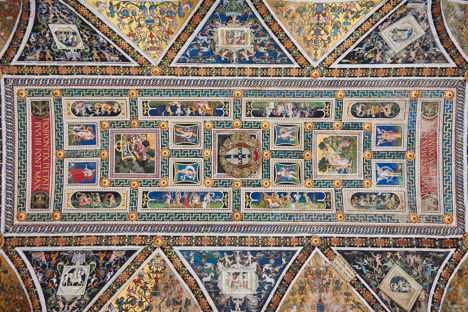
Zabaglione and salted fish: Italian feast days in May
Amy Gulick brings to life two of May's most important dates and the dishes eaten to commemorate them.
Zabaglione and salted fish: Italian feast days in May
Amy Gulick brings to life two of May's most important dates and the dishes eaten to commemorate them.
May is dedicated to Mary in Italian Catholic culture, associated symbolically with springtime abundance, rebirth and flowers. Yet throughout the month, Italians remember other perhaps lesser-known saints with celebratory feasting and intriguing legends.
Paschal Baylón
On 17 May, the people of Naples venerate Paschal Baylón, a Spanish Franciscan who lived in the second half of the sixteenth century. As he likely never travelled to southern Italy, many attribute his popularity in Naples – where numerous streets, piazzas, and churches are named after him – to the cultural influences of centuries of Spanish rule in the area. He did spend time in Turin, however, where his association with ‘female’ concerns (Paschal is protector of women and helper of women seeking husbands, in addition to being the patron saint of pastry chefs) along with a popular legend about his role in the creation of zabaglione took root. While in Turin, Paschal is said to have advised women complaining of their husband’s spent sexual desire to prepare a mixture of egg, cream, sugar and wine. The recipe, apparently successful in stimulating the attentions of at least a few husbands, grew in popularity among Turinese women, and eventually spread to other parts of Italy. Meanwhile, its name morphed from San Bajon, the saint’s name in the Turin dialect, to zabaglione.
Across the various competing versions of zabaglione’s origins, a widely-held belief in its fortifying or tonic-like qualities has remained constant: beyond its reputed aphrodisiacal powers, zabaglione is also considered a beneficial boost for the weak or sickly. On his feast day many southern Italians, mostly women, will remember Paschal with not only zabaglione but also several types of pastries and cakes calling for an egg and cream filling, perhaps invoking the saint with his dedicated prayer: San Pasquale Baylonne protettore delle donne, fammi trovare marito (‘Saint Paschal, protector of women, help me find a husband’).
Bernardino of Siena
Next is the 20 May feast day of Bernardino of Siena, sometimes called Bernardine. Born in the Tuscan town Massa Marittima in 1380, Bernardino was an active Franciscan priest, well-known in early fifteenth century Italy given his extensive travels around Italy. While by today’s standards Bernardino could hardly be considered enlightened in his views – his frequent and fiery sermons on the evils of usury, witchcraft, sodomy and more have in the centuries since earned him an anti-Semitic, misogynistic and homophobic repute – during his lifetime they reflected contemporary religious concerns and beliefs held by many Italian Catholics.
Fortunately, merrier stories of Bernardino’s doings have survived. One in particular is remembered every 20 May in Trevignano Romano (near Rome), where residents have inherited a recipe for preserving fish directly from the saint himself. According to the tale, with a Saracen invasion imminent, Bernardino assisted and calmed the frightened people of Trevignano. He then told the local fishermen to launch their nets. The expected attack did not occur, and what’s more the fishermen pulled in such an astounding catch it was deemed a miracle, now celebrated annually with the sagra del pesce marinato, or marinated fish festival.
For the festival, fish such as pike, perch, tench, common rudd and eel are prepared according to the recipe created on that miraculous occasion. Once cleaned, the fish are cut into pieces, salted, floured and fried in boiling oil. After resting overnight in a large bowl or platter, the fish slices are layered into an earthenware container, alternating with small amounts of sage, lemon and rosemary. Into this a vinegar flavoured with garlic, lemon slices, rosemary and salt is poured, then left to steep for a few days before the saint’s festival.
Another fascinating Bernardino recipe comes from his city of birth, Massa Marittima, whose residents will attest that the panettone-like fruit cake known as il dolce di San Bernardino originated in the 1400s – with the saint’s very own grandmother! Passed down over the centuries among local women, ‘Bernardino’s cake’ is made with walnuts, raisins, dried fruits, honey, almond paste, spices and the odd addition of pecorino cheese. The people of Massa Marittima say theirs is the only town in Italy where it is (officially) made.


